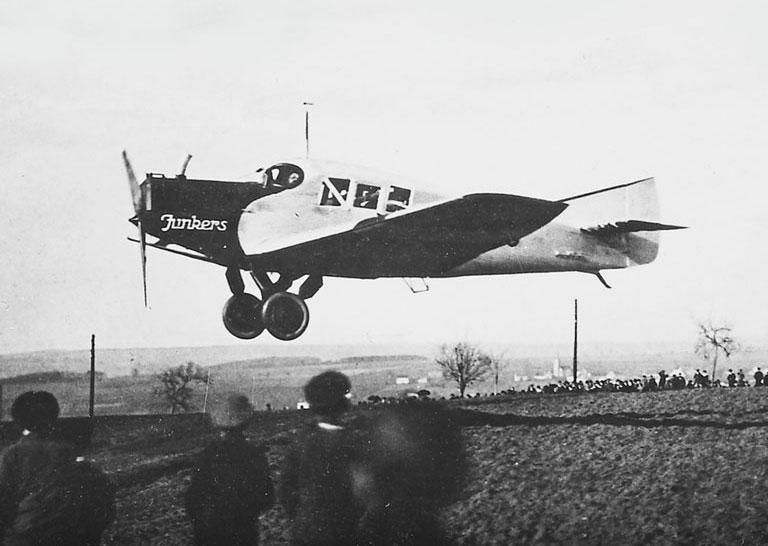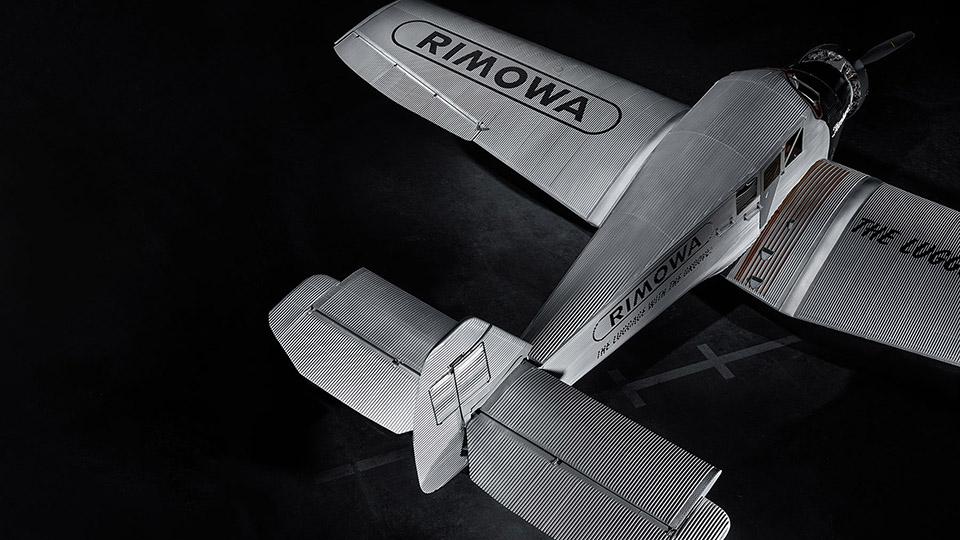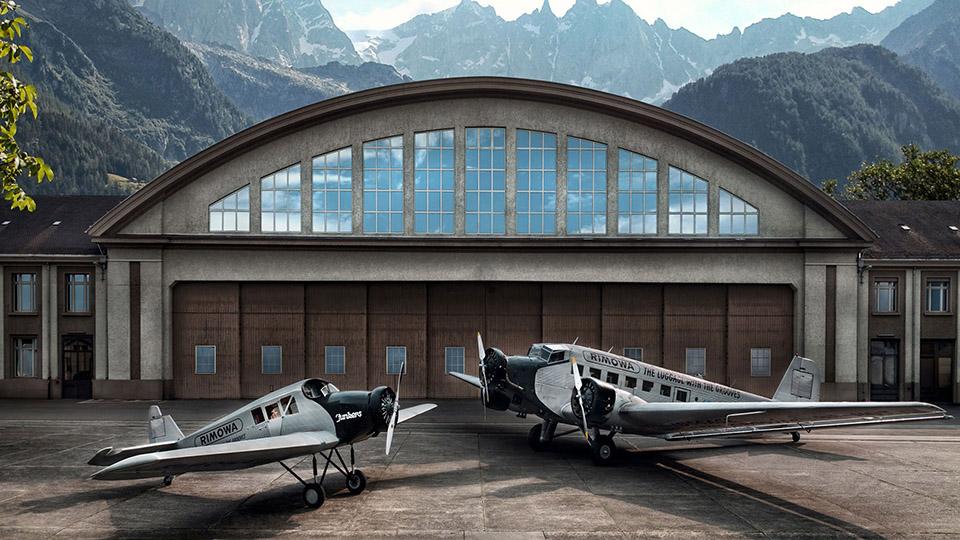 For many people, air travel has become routine. How many times have you boarded an airplane without a second thought while traveling for business or pleasure, perhaps still irritated by crowds or the long lines for the screening process in the airport? It seems as though air travel has been around forever – but it really hasn’t been that long. It’s been less than 100 years since the first international passenger flight took place – a brief flight from London to Paris in 1919. Coincidentally, 1919 was also the year the first all-metal passenger airplane was built.
For many people, air travel has become routine. How many times have you boarded an airplane without a second thought while traveling for business or pleasure, perhaps still irritated by crowds or the long lines for the screening process in the airport? It seems as though air travel has been around forever – but it really hasn’t been that long. It’s been less than 100 years since the first international passenger flight took place – a brief flight from London to Paris in 1919. Coincidentally, 1919 was also the year the first all-metal passenger airplane was built.
The Junkers F13 took its first flight in June of 1919 and would set records for altitude and flight length, while also attracting passengers as the first airplane to offer a heated cabin. I can’t imagine what the airplane’s first passengers must have felt as they took off in the history-making craft, but I’m willing to bet they felt quite differently from today’s blasé air travelers. Exhilaration, fear, awe at being the first to travel in such a revolutionary manner – those feelings are enviable, but thanks to a luggage company, a select group of people can now experience flight in the first metal passenger plane once again.
Luggage manufacturer RIMOWA has been around for even longer than the Junkers F13. Known for their signature grooved metal, lightweight suitcases, the company has a strong connection to the F13, even owing some of their success to it. Richard Morszeck, father of current CEO Dieter Morszeck, used the same metal used to craft the F13 to design a set of luggage called Topas in 1937. That metal, an aluminum alloy called duralumin, made for a luggage set that was instantly popular among travelers for its lightweight yet sturdy properties – and the fact that its grooved surface resembled the surface of the Junkers F13 couldn’t have hurt either.
The Topas luggage was the first all-metal baggage in existence, and it remains RIMOWA’s signature product to this day. Its shared history with the F13 hasn’t been lost on Dieter Morszeck, who was eager to get involved with a project, initiated in 2009 by the German Association of Friends of Historical Aircraft, to create a functional replica of the plane, which was officially retired in 1951.
 The original parts of the plane were too old to use, but the team used a laser scanner to take a 3D scan of an original F13, which consists of 2,600 individual parts assembled with over 35,000 rivets. Determined to create an exact copy of the plane, down to the last detail, the team used the scan to create a CAD file and carefully map out the reconstruction. Over the course of two years, the team – which was comprised of members from Käelin Aero Technologies, MSW Aviation, Naef Flugmotoren AG, AeroFEM GmbH, and Ju-Air, along with RIMOWA, painstakingly built a perfect replica of the Junkers F13, using the CAD model as a detailed blueprint.
The original parts of the plane were too old to use, but the team used a laser scanner to take a 3D scan of an original F13, which consists of 2,600 individual parts assembled with over 35,000 rivets. Determined to create an exact copy of the plane, down to the last detail, the team used the scan to create a CAD file and carefully map out the reconstruction. Over the course of two years, the team – which was comprised of members from Käelin Aero Technologies, MSW Aviation, Naef Flugmotoren AG, AeroFEM GmbH, and Ju-Air, along with RIMOWA, painstakingly built a perfect replica of the Junkers F13, using the CAD model as a detailed blueprint.
On September 15, the completed RIMOWA F13 took off from Dübendorf, Switzerland. Piloted by Morsczeck and another engineer who sat in an open-air cockpit, the plane also carried four passengers who were able to enjoy the luxurious heated leather seats within the enclosed cabin – just like those in the original. The half-hour flight was witnessed by a crowd of attendees that included Hans Walter Bender, who flew on the original Junkers F13 as a six-year-old in 1929.
“Almost 87 years later, it’s incomparable,” he said. “It’s still amazing, just like it was back then.”
The replica has a range of about 370 miles, much like the original. Additional replicas are also being made to sell to wealthy collectors, and pre-orders are being taken now. You can see the maiden flight of the RIMOWA F13 below, and discuss further in the RIMOWA 3D Scanning forum over at 3DPB.com.
[Source: Forbes / Travelers Today]
Subscribe to Our Email Newsletter
Stay up-to-date on all the latest news from the 3D printing industry and receive information and offers from third party vendors.
You May Also Like
Precision at the Microscale: UK Researchers Advance Medical Devices with BMF’s 3D Printing Tech
University of Nottingham researchers are using Boston Micro Fabrication‘s (BMF) 3D printing technology to develop medical devices that improve compatibility with human tissue. Funded by a UK grant, this project...
3D Printing Webinar and Event Roundup: April 21, 2024
It’s another busy week of webinars and events, starting with Hannover Messe in Germany and continuing with Metalcasting Congress, Chinaplas, TechBlick’s Innovation Festival, and more. Stratasys continues its advanced training...
3D Printing Webinar and Event Roundup: March 17, 2024
It’s another busy week of webinars and events, including SALMED 2024 and AM Forum in Berlin. Stratasys continues its in-person training and is offering two webinars, ASTM is holding a...
3D Printed Micro Antenna is 15% Smaller and 6X Lighter
Horizon Microtechnologies has achieved success in creating a high-frequency D-Band horn antenna through micro 3D printing. However, this achievement did not rely solely on 3D printing; it involved a combination...






























